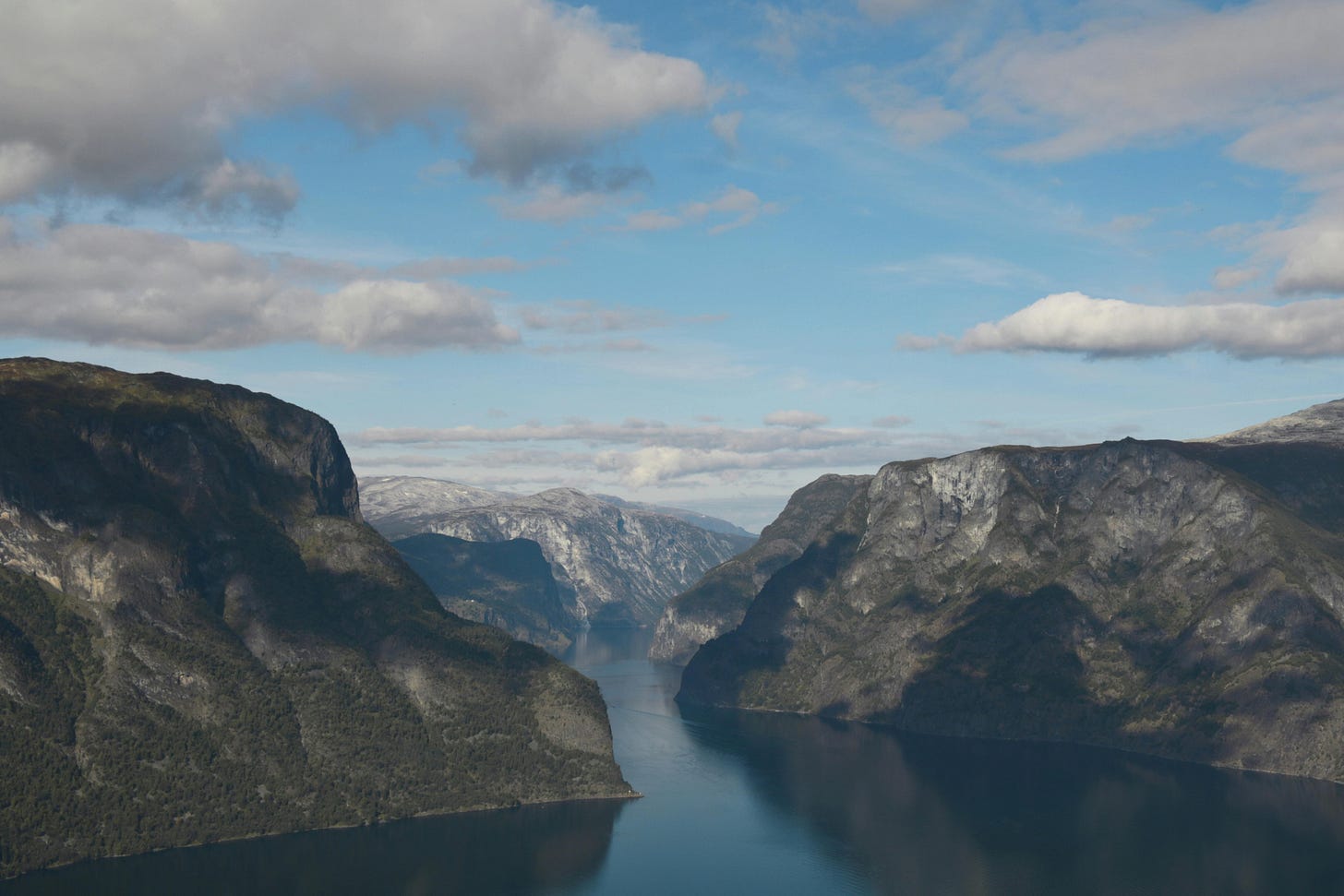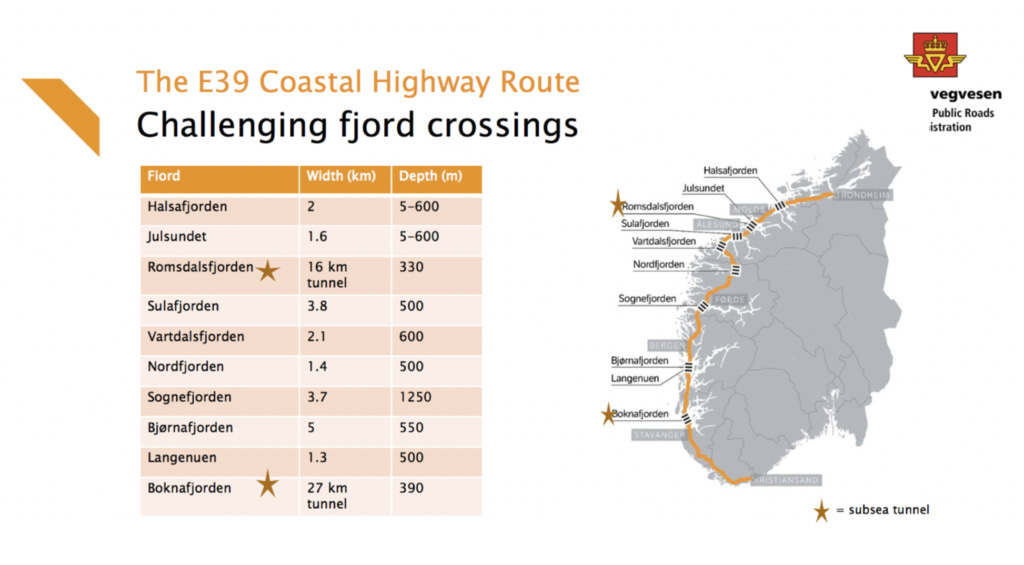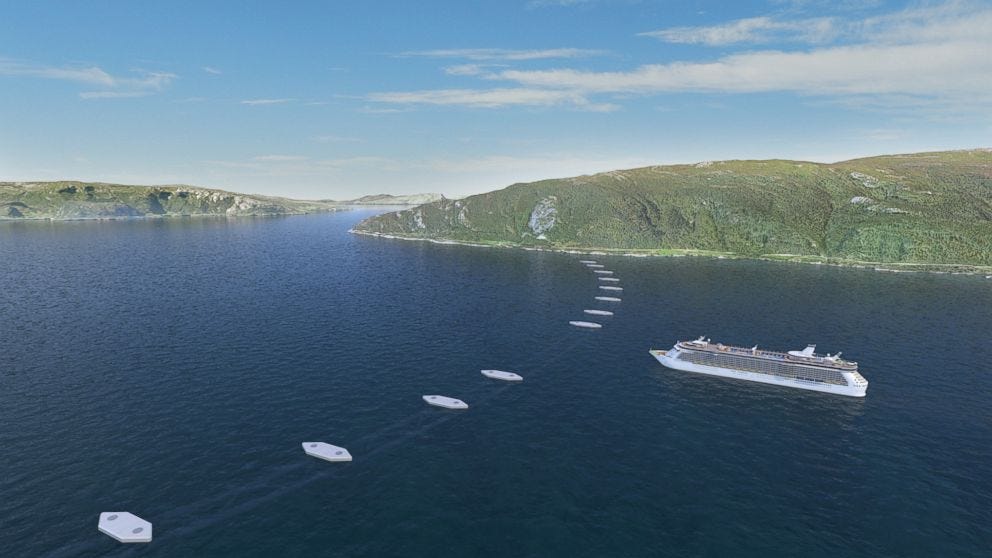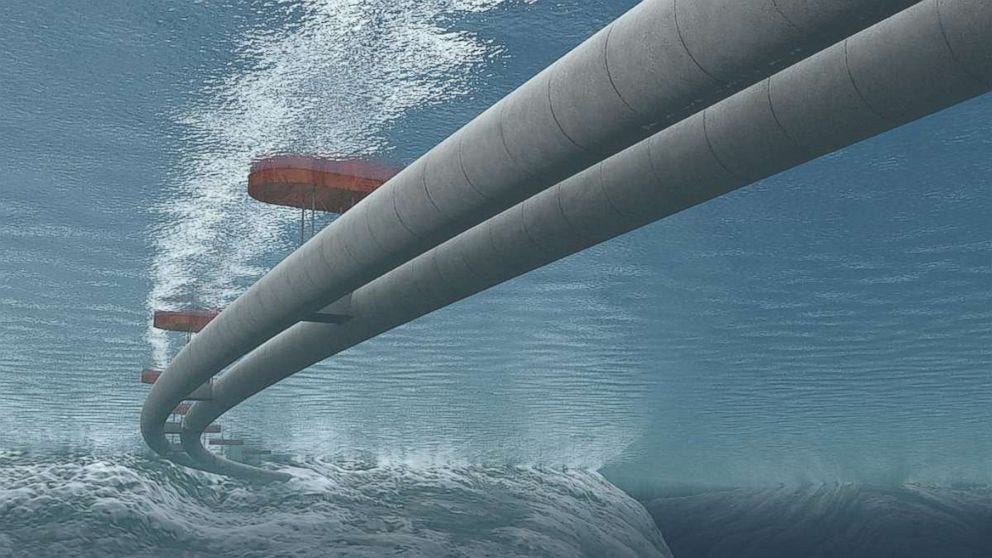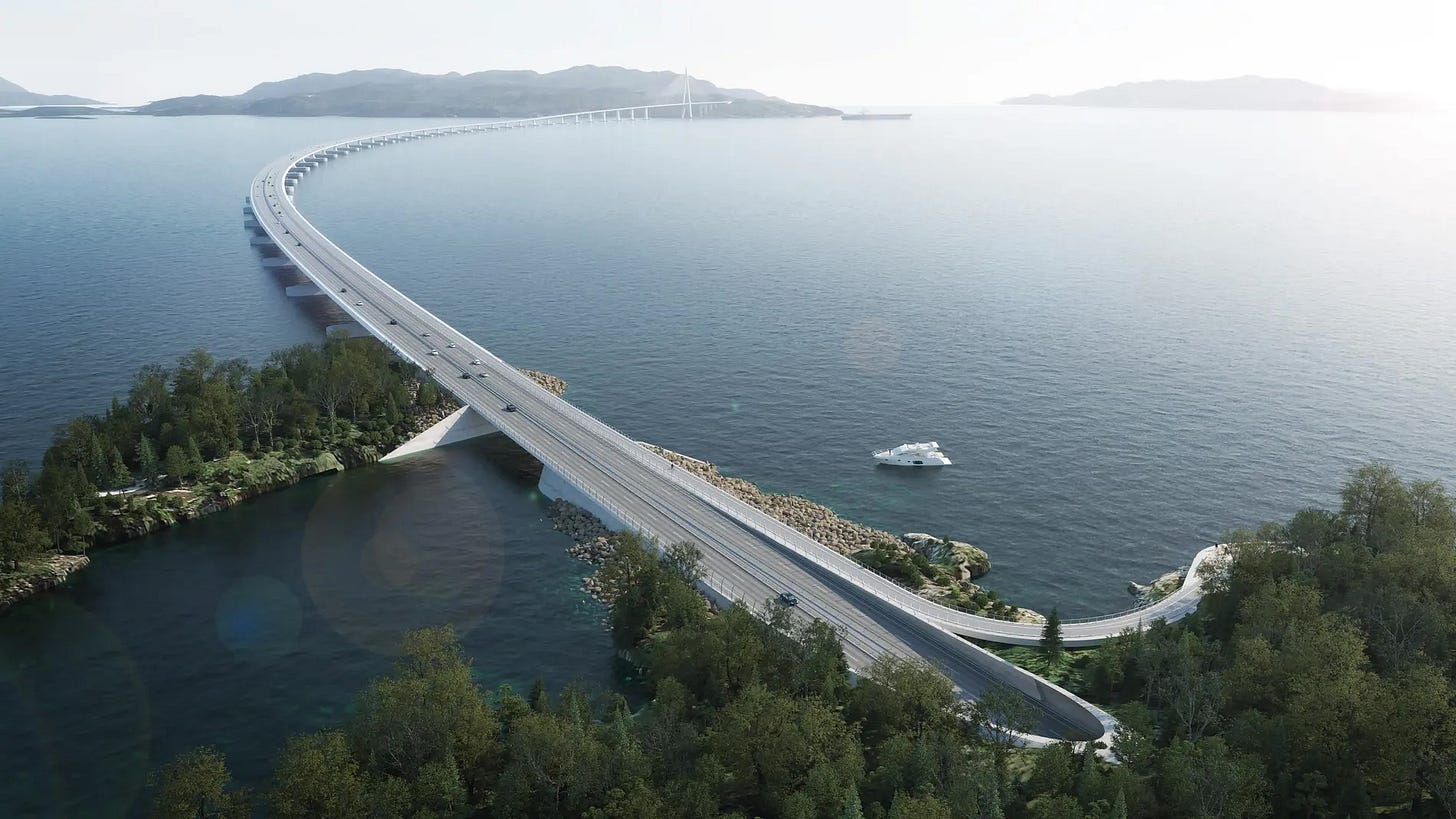Norway's floating bridges and subsea tunnels
Norway wants to eliminate ferry crossings along its western coast with floating bridges and undersea tunnels. Will it happen?
Hi there,
Welcome to another issue of The Off Site!
If you've ever driven Norway's western coast, you know the routine: drive for a while, wait for a ferry to cross the fjord, drive some more, wait for another ferry.
And so it goes. If you drive the entire 1100 km route, this takes 21 hours.
This week, we look at ambitious and controversial plans to eliminate these ferry connections through what might be some of the most complex infrastructure engineering happening in Europe right now.
Let's dive in.
A ferry-free future
The E39 highway runs 1,100 kilometers along Norway's western coast from Kristiansand in the south to Trondheim in the north. Currently, the route includes seven ferry crossings, making the journey time approximately 21 hours.
The Norwegian Public Roads Administration's (NPRA) has long-term plans to create an uninterrupted, ferry-free route that will cut travel time to just 11 hours. This includes several ambitious megaprojects to create bridges and tunnels across incredibly deep fjords.
The fate of the entire plan is still up for debate in Norway, as the projects face pressure from groups who say it conflicts with climate goals and that the some of the outcomes could simply be achieved with more frequent ferries.
Critics aside, the vision is an exciting one. The megaproject is potentially a testing ground for new engineering solutions that could change how we cross deep fjords worldwide.
‘Submerged floating tube bridges’
Perhaps the most fascinating aspect of the proposed E39 project is the proposal to use submerged floating tunnels, or ‘Archimedes bridges’, across several of the most challenging fjords. Though this is an idea researchers have floated (pun intended) for years, if the Norwegians actually build one, it would be the world's first.
The concept is relatively simple: the tunnel would float 20-30 meters below the surface, suspended by pontoons and anchored to the seafloor. This approach solves the challenge of spanning fjords that are too wide for conventional bridges and too deep for traditional tunnels.
The floating tunnels are proposed because the fjords are too deep for subsea tunnels. Sognefjord alone is up to 1200 metres deep. The fjords are also often used by large cruise ships, which can have a height of up to 70 metres.
Excitement around submerged floating tunnels — or “submerged floating tube bridges” as New Civil Engineer calls it — has been high since concept illustrations were released by Norway’s Public Road Administration in 2019. Though with political controversy over the ambition and cost of the plan, it’s still to be seen whether these are ever built.
The world’s longest subsea road tunnel
While the floating tunnels capture the imagination of the public, another megaproject on the route is currently well under construction.
Since 2019, Norway’s Ryfast tunnel has been the world’s longest subsea tunnel — but the E39’s Rogfast tunnel looks set to break the record. When completed in 2033, it will be the world's longest and deepest subsea road tunnel, stretching 27 kilometers and reaching depths of 392 meters below sea level.
The tunnel will run beneath the Boknafjord and Kvitsøyfjord, connecting Randaberg near Stavanger to Bokn, with a 4.1-kilometer spur tunnel extending to Kvitsøy island.
Originally approved by the Norwegian Parliament in 2017 with a budget of NOK 16.8 billion (USD $1.5 billion) and planned for completion in 2025-26, the project faced significant challenges. Construction began in January 2018 but was halted in October 2019 due to cost overruns.
But after a comprehensive review, the project received approval in late 2020 with a revised budget of NOK 24.8 billion (USD $2.2 billion), split between government funding and toll-based loans.
Who’s building the Rogfast tunnel?
Around 70% of the Rogfast project is being built by Implenia Norge and an Implenia Stangeland Maskin joint venture.
This includes the E02 Kvitsøy contract at the southern end of the project, which includes a 8.8km two-way tunnel, with a 10.5m cross-section from Kvitsøy at approximately 230m below sea level.
In 2022, Skanska were also awarded a NOK5bn (£415M) contract to work on the northern part of the tunnel.
Oddvar Kaarmo, the Rogfast project manager, told The Independent that the major challenges to delivery at this point were less technical than logistical.
Once the tunnel is finished, we will not have to rely on good weather to keep the roads open. About half a year after the last drill and blast, we have to deliver the project, so we have to get a lot of work done simultaneously. It’s more about logistics than tunnelling.
The world’s longest floating bridge
Another exciting potential megaproject is the Bjørnafjorden crossing. This is part of the Hordfast project of the E39, and aim aims to replace a slow ferry service across the fjord with a direct road connection between Bergen and Stavanger. The 5-kilometer structure would replace a 40-minute ferry journey with an 11-minute drive, forming a crucial link in the E39 coastal highway between Bergen and Stavanger.
What makes this project unique is its floating pontoon design — a necessary solution as the fjord's 550-meter depth makes traditional foundations impractical. The bridge will consist of 38 steel pontoons, with three anchored to the seabed and the rest floating freely.
Each pontoon is approximately 50 meters long, with a distinctive rectangular shape chosen to minimize fabrication costs while maximizing stability in harsh North Sea conditions.
The engineering challenges are significant: the structure must handle substantial wave loads and wind forces while providing a 150-foot vertical clearance for marine traffic. To achieve its 100-year design life, the bridge will use a combination of passive galvanic cathodic protection and specialized coatings to prevent corrosion.
If successful, this groundbreaking project could apparently set new standards for bridge construction in deep waters worldwide.
But will it happen?
These projects are exciting — but will they happen? Aside from the Rogfast tunnel, work hasn’t been started on the other megaprojects discussed for the E39, and they remain hugely controversial within Norway.
Like all massive transport projects, E39 upgrade projects have been subject to budget blowouts, environmental criticisms, and economic debate.
Recently, the NPRA claimed that the Hordfast crossing would have a net-positive social impact — a relatively rare result for roading projects in Norway. But the roading agency was forced to recalculate because this result ignored the government’s actions to reduce greenhouse gas emissions in transport, including the fact that “toll fees or other measures must ensure zero growth in car traffic in major cities.”
Critics also argue that the project's massive cost could be better spent on other infrastructure needs or on developing more sustainable transport options. The Norwegian Green Party has called for a scaling back of the project, arguing that improved ferry services could achieve similar benefits at a fraction of the cost — primarily because some of the time wasted by commuters currently is spent at the dock waiting for ferries.
For these reasons, the future of the E39 upgrade remains uncertain.
On the podcast this week
This week on The Off Site pod, Jase and Carlos discuss Canada’s high-speed rail ambitions, practical AI applications in construction, and a recent survey that looks into job satisfaction among construction professionals.


